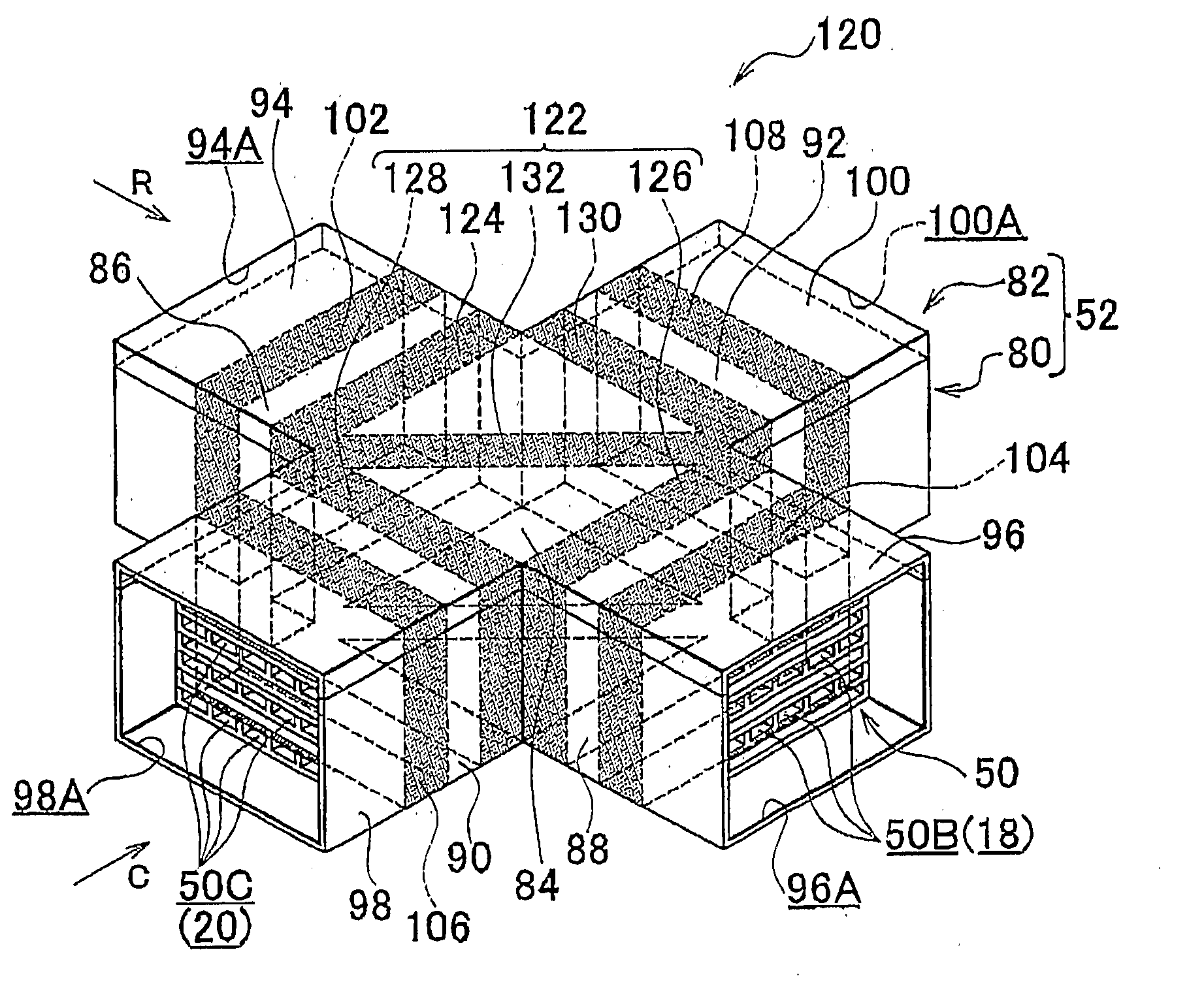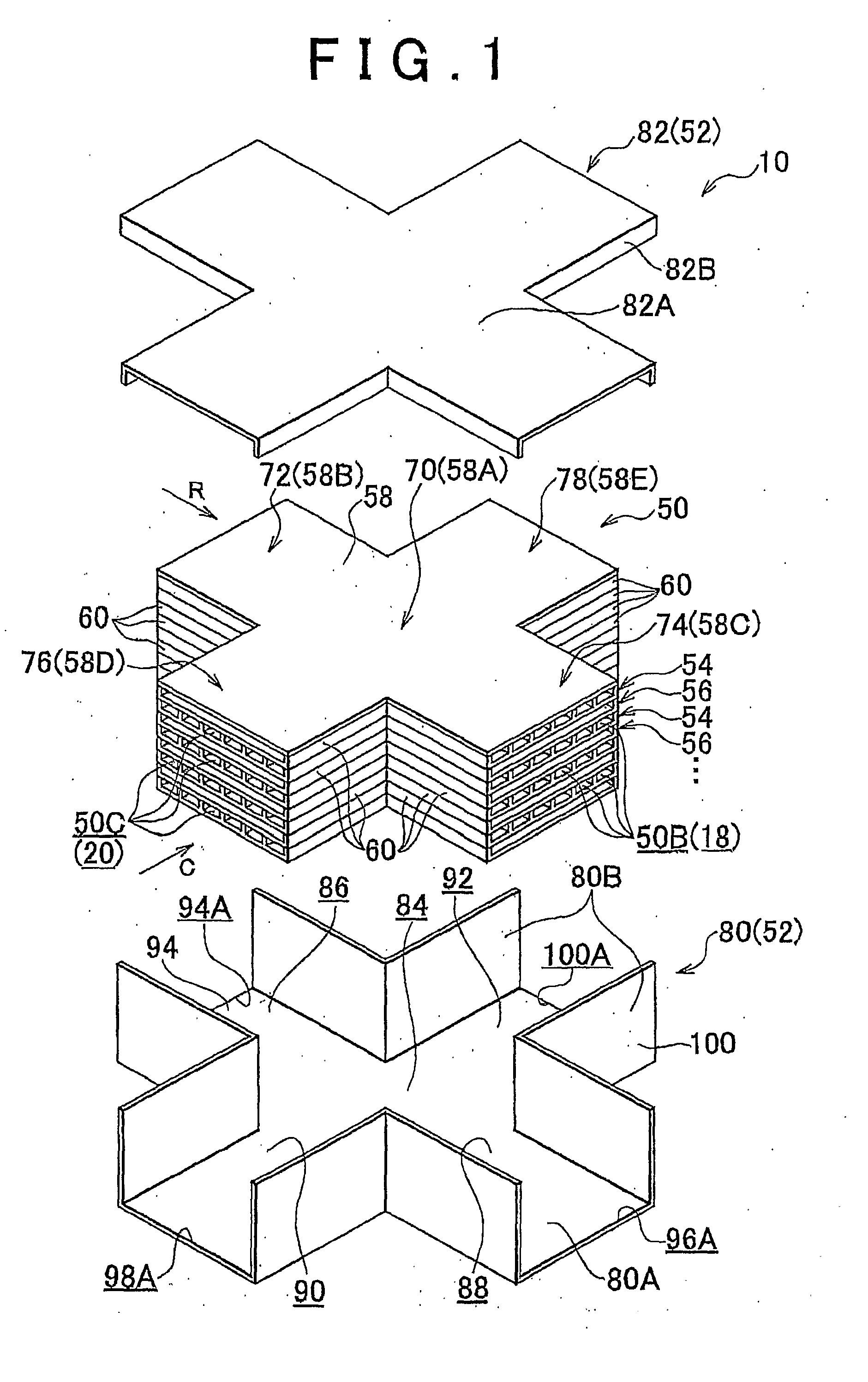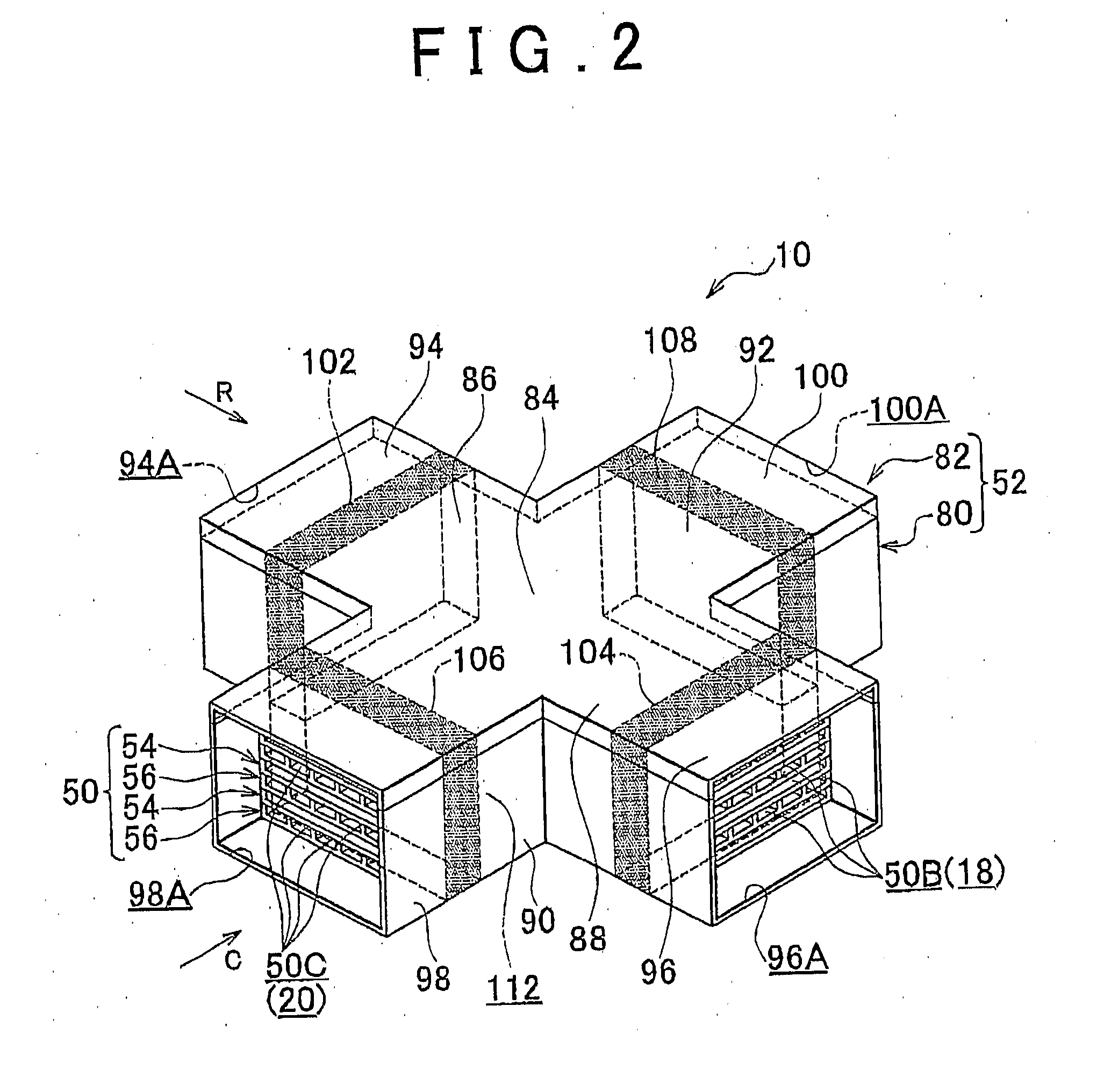Heat exchanger, heat-exchange reformer, and methods of producing heat-exchanger and heat-exchange reformer
a technology of heat exchanger and reformer, which is applied in the direction of sustainable manufacturing/processing, lighting and heating equipment, electrochemical generators, etc., can solve the problems of heat loss, reduce the amount of heat exchange, and heat loss on the face, so as to suppress the heat deformation of the stacked core, reduce local concentration of stress, and simplify the structure
- Summary
- Abstract
- Description
- Claims
- Application Information
AI Technical Summary
Benefits of technology
Problems solved by technology
Method used
Image
Examples
first embodiment
[0040]A heat-exchange reformer 10 according to the invention will be described with reference FIG. 1 to FIG. 5. First, the entire configuration of a fuel cell system 11 in which the heat-exchange reformer 10 is employed will be described. Then, the structure of the heat-exchange reformer 10 will be described in detail.
[0041]The entire configuration of the fuel cell system 11 will be described. FIG. 5 shows a configuration diagram (process flow-sheet) of the fuel cell system 11. As shown in FIG. 5, the fuel cell system 11 includes a fuel cell 12 and a reforming unit (reformer) 10. The fuel cell 12 and the reformer 10 are main elements of the fuel cell system 11. The fuel cell 12 consumes hydrogen and generates electric power The reformer 10 generates reformed gas to be supplied to the fuel cell 12. The reformed gas contains hydrogen.
[0042]In the fuel cell 12, an electrolyte (not shown) is provided between an anode electrode (fuel electrode) 14 and a cathode electrode (air electrode) ...
second embodiment
[0091]The other portions of the configuration of the heat-exchange reformer 120 are the same as those of the configuration of the heat-exchange reformer 10.
[0092]Accordingly, in the heat-exchange reformer 120 according to the second embodiment, the same effects are obtained as in the heat-exchange reformer 10 according to the first embodiment. Also, in the heat-exchange reformer 120, the heat-insulation layer 112 is partitioned into a plurality of heat-insulation layers (the first inner heat-insulation layer 140A, the second inner heat-insulation layer 140B, and the four outer heat-insulation layers 142). Therefore, if the degree of vacuum in one of the heat-insulation layers decreases, a convection flow (for example, the convection flow of air that enters the one of the heat-insulation layers) does not occur in the entire heat-insulation layer 112. Thus, a sufficient level of heat-insulation performance is maintained. That is, for example, if the degree of vacuum in one of the out...
third embodiment
[0096]The other portions of the configuration of the heat-exchange reformer 150 are the same as those of the configuration of the heat-exchange reformer 10.
[0097]Accordingly, in the heat-exchange reformer 150 according to the third embodiment, the same effects are obtained as in the heat-exchange reformer 10 according to the first embodiment. In the heat-exchange reformer 150, the manifolds 94, 96, 98, and 102 are formed by joining the manifold members 154, which are separate members, to the case 152. Therefore, there is much flexibility in the design. That is, no restriction is placed on the design of each of the manifolds 94, 96, 98, and 102 by the size and shape of the case 152. Although the open ends 94A, 96A, 98A, and 100A have a rectangular shape in this embodiment, the open ends may have shapes in accordance with, for example, the shapes of the respective lines connected to the open ends (i.e., the shapes of the raw-material supply line 28, the reformed-gas supply line 30, t...
PUM
| Property | Measurement | Unit |
|---|---|---|
| temperature | aaaaa | aaaaa |
| shape | aaaaa | aaaaa |
| area | aaaaa | aaaaa |
Abstract
Description
Claims
Application Information
 Login to View More
Login to View More - R&D
- Intellectual Property
- Life Sciences
- Materials
- Tech Scout
- Unparalleled Data Quality
- Higher Quality Content
- 60% Fewer Hallucinations
Browse by: Latest US Patents, China's latest patents, Technical Efficacy Thesaurus, Application Domain, Technology Topic, Popular Technical Reports.
© 2025 PatSnap. All rights reserved.Legal|Privacy policy|Modern Slavery Act Transparency Statement|Sitemap|About US| Contact US: help@patsnap.com



